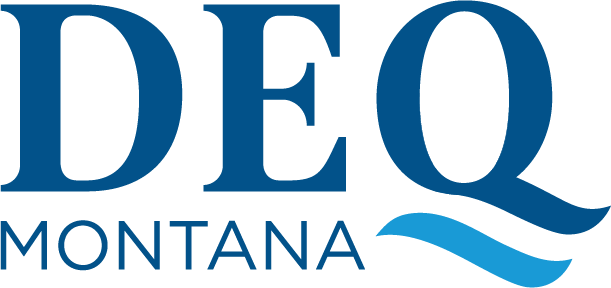FOR IMMEDIATE RELEASE
Date: July 06 2022
Contact (for technical related questions): 
Moira Davin, Public Relations Specialist
Montana Department of Environmental Quality
406-461-2503 Moira.Davin@mt.gov
Contact (for health related questions):
Jon Ebelt, Public Information Officer
Montana Department of Public Health and Human Services
406-444-0936 Jebelt@mt.gov
Reporting of Harmful Algal Blooms Helps Alert Others and Keeps State Agencies Informed of Pollution Issues
Blooms Can Sicken Humans and Kill Pets and Livestock
HELENA—Don’t let an encounter with a harmful algal bloom (HAB) ruin an outing on a beautiful Montana summer day. Blooms can impact human health and the health of freshwater ecosystems.
Harmful algal blooms most often occur in Montana’s reservoirs and lakes, although water users should also be cautious about water flowing immediately downstream of a HAB. Common characteristics of HABs include green, blue, or gold coloration and the appearance of grass clippings or paint spilled on the water’s surface.
Harmful algal blooms happen when cyanobacteria, also known as blue green algae, rapidly grow out of control. These organisms are native to Montana and are naturally found at low, safe densities in many freshwater systems. HABs can form under certain conditions including when too many nutrients are available, when winds are low and water is calm, when the sky is clear and sunny, and when the growing season is long or hot. HABs can produce cyanotoxins that can cause skin irritation or sicken humans and even kill pets and livestock if ingested. Toxins do not always occur with a HAB, but it’s impossible to tell without taking water quality samples. When in doubt, it’s best to stay out.
The Montana Department of Environmental Quality and Department of Public Health and Human Services maintain a website where people can submit reports of suspected HABs at: HAB.mt.gov
Before recreating in a waterbody, Montanans and visitors can check the website and view a map of all blooms reported, any health advisories or monitoring data associated with that report, and plenty of photos and information to educate yourself and others on what to look for. If you suspect a HAB, submit a report and state agencies will work with the local jurisdiction to monitor the incident. These reports are important for the health and safety of recreators and water users in the state, and they also help state agencies track where nutrient pollution may be an issue.
Last summer, 29 out of 47 citizen reports were confirmed to be harmful algal blooms. Waters that commonly experience HABs include but are not limited to: Clark Canyon Reservoir (Beaverhead County), Cooney Reservoir (Carbon County), Hebgen and Hyalite Reservoirs (Gallatin County), Beaver Creek Reservoir (Hill County), Canyon Ferry, Hauser Reservoir, Holter Reservoir, and Lake Helena (Lewis and Clark County), Harrison Reservoir (Madison County), Seeley Lake (Missoula County), Nevada Creek Reservoir (Powell County), and Noxon Reservoir (Sanders County).
When in doubt, stay out. Do not drink, swallow, or swim in water that shows signs of a HAB and keep kids and pets or livestock out. Direct contact, ingestion, or inhalation of cyanotoxins may irritate the skin, eyes, nose, throat and respiratory system, or cause nausea, vomiting, diarrhea, headache or liver and kidney damage. If you suspect a HAB-related illness in a person or animal, including livestock, call Poison Control immediately at 1-800-222-1222.
Nutrients like nitrogen and phosphorus fuel algae growth and potential HABs. Below are actions you can take to reduce nutrient pollution in Montana’s waters:
- Reduce your use of lawn or crop fertilizer.
- Avoid trampling streamside vegetation when you’re recreating.
- If you’re lucky to live alongside a stream or lake—restore and protect native woody plants, flowers and grasses because they filter pollution and stabilize land.
- If your home relies on a septic system, have it regularly serviced and consider upgrading it to a higher level treatment system.
Report a suspected HAB at www.hab.mt.gov, call 1-888-849-2938, or by email to HAB@mt.gov
###
About DEQ:
At the Montana Department of Environmental Quality, our mission is to champion a healthy environment for a thriving Montana. DEQ is charged with maintaining and improving Montana’s air, land, and water. For more information about DEQ programs, please visit: deq.mt.gov
About DPHHS:
The Montana Department of Public Health and Human Services seeks to promote and protect the health, well-being, and self-sufficiency of all Montanans. DPHHS works to protect adults from abuse and financial exploitation, serve people with developmental disabilities, fund the treatment of adults and children with mental health and/or substance abuse issues, determine eligibility for various assistance programs, oversee child support payments, protect children from abuse and neglect, and implement various public health programs.

